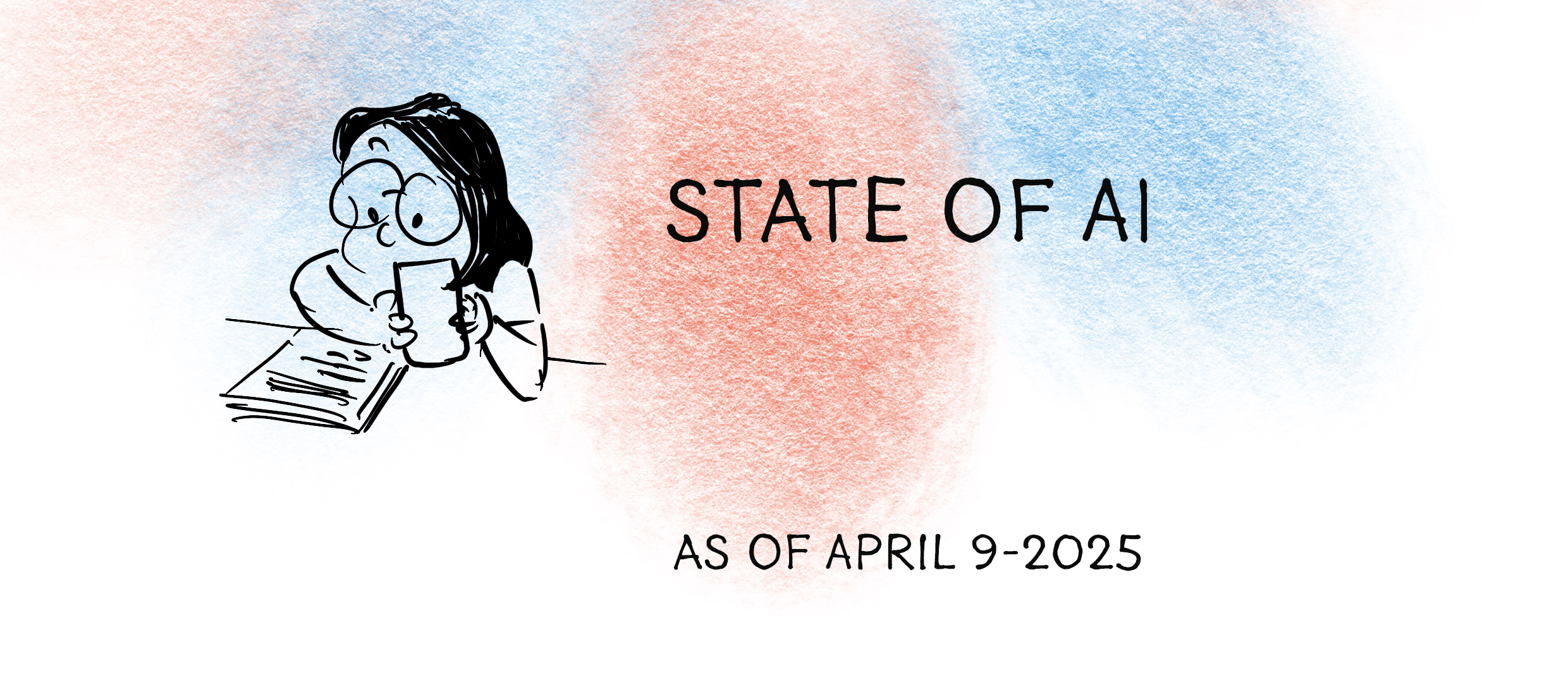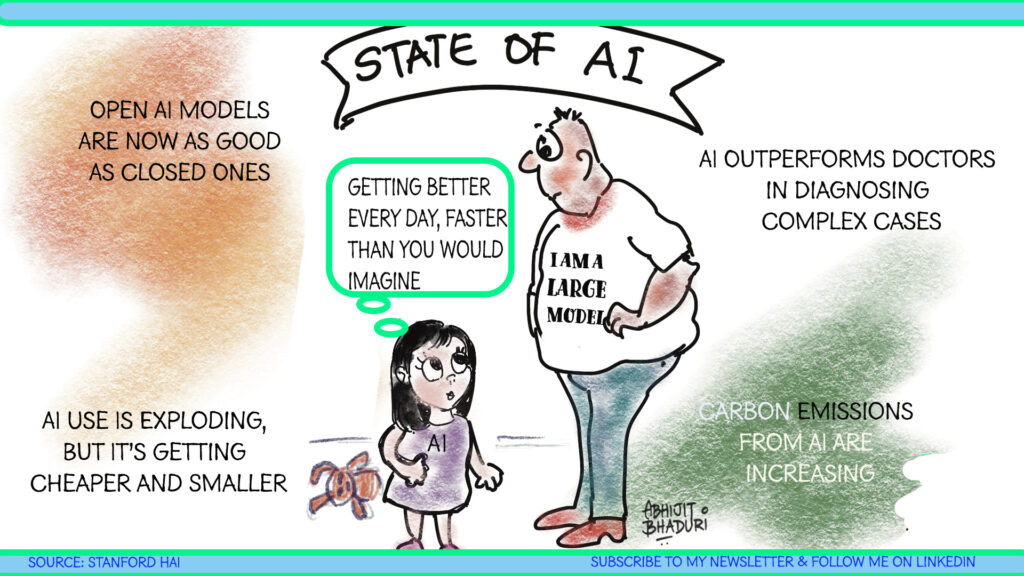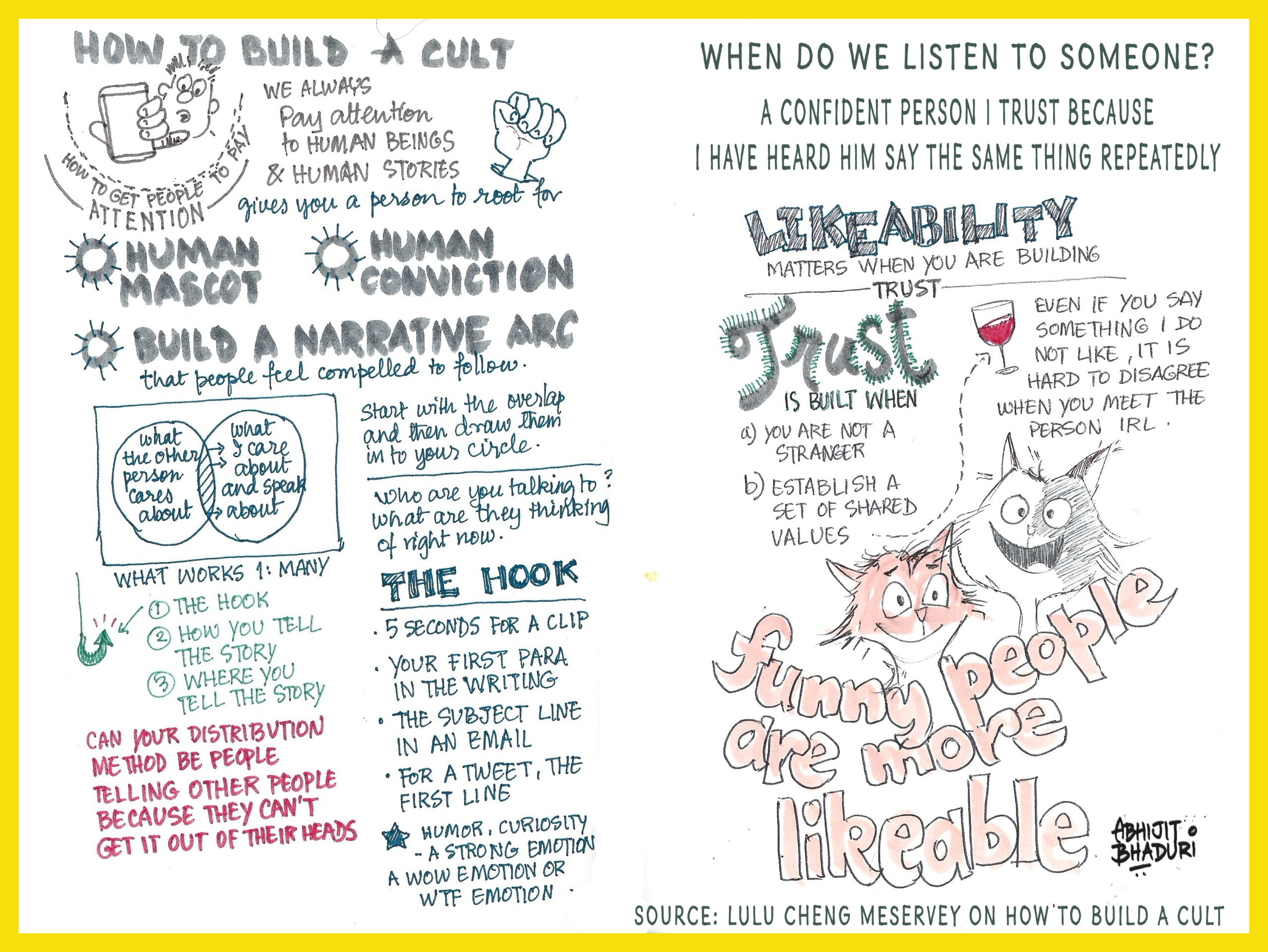
The Stanford Institute for Human-Centered Artificial Intelligence (HAI) has an interdisciplinary group of experts from across academia and industry who put together this report.
It identifies the biggest technical advances, new achievements in benchmarking, investment flowing into generative AI, education trends, legislation around this technology and even misuse of AI.
Here’s a layperson-friendly summary of the most jaw-dropping and counter-intuitive takeaways from the Stanford AI Index 2025 report—followed by what they mean for you and what actions you might consider. All in under 500 words.
5 Shocking & Counter-Intuitive Takeaways
1. AI Use Is Exploding, But It’s Getting Cheaper and Smaller
The cost of using an AI model like GPT-3.5 dropped from $20 to $0.07 per million words in just 18 months. Even tiny models (like Phi-3-mini with 3.8 billion parameters) now match the performance of giant ones from 2022.
2. Open AI Models Are Now As Good As Closed Ones
In early 2024, open-source AI lagged far behind proprietary models. By 2025, that gap shrank to just 1.7%. That’s a huge leap in accessibility and democratization.

3. China Is Nearly Matching the U.S. in Model Quality—Fast
On key AI benchmarks, the performance gap between top U.S. and Chinese models shrunk from over 30% to under 4% in just a year.
4. AI Outperforms Doctors in Diagnosing Complex Cases
Studies showed AI (GPT-4) outperforming doctors in diagnosing illness. Even more surprising? AI-doctor teams did better than either alone.
5. Carbon Emissions from AI Are Blowing Up
Training GPT-4 generated 5,184 tons of CO₂—as much as 288 average Americans produce in a year. The next-gen model Llama 3.1 emitted even more: 8,930 tons.
What this means
AI is mainstream and accelerating—not just for companies, but in everyday life (healthcare, education, even Nobel-winning science).
• The cost and size of models are no longer barriers—soon, anyone with a laptop or phone could run near-state-of-the-art AI.
• Innovation is now global—the AI superpower race is no longer U.S.-only; China and others are catching up quickly.
• Ethics and environmental impact are lagging behind progress—as AI scales, so do hidden costs like energy use, misinformation, and bias.
What should you do
1. For Professionals: Start experimenting with open-source models like LLaMA or Mistral. You no longer need millions in funding or a PhD to use cutting-edge AI.
2. For Entrepreneurs: Lower costs + open models = huge opportunity to build niche apps or tools with powerful AI under the hood.
3. For Citizens & Policy Advocates: Push for better AI transparency and sustainability—both are behind the curve. Support regulation that balances innovation with responsibility.
4. For Everyday Users: Use AI to boost productivity, but stay informed on ethical concerns—especially around privacy, misinformation, and fairness.
To subscribe to my #free #newsletter copy and paste this in your browser https://bit.ly/3ZwsrZF



